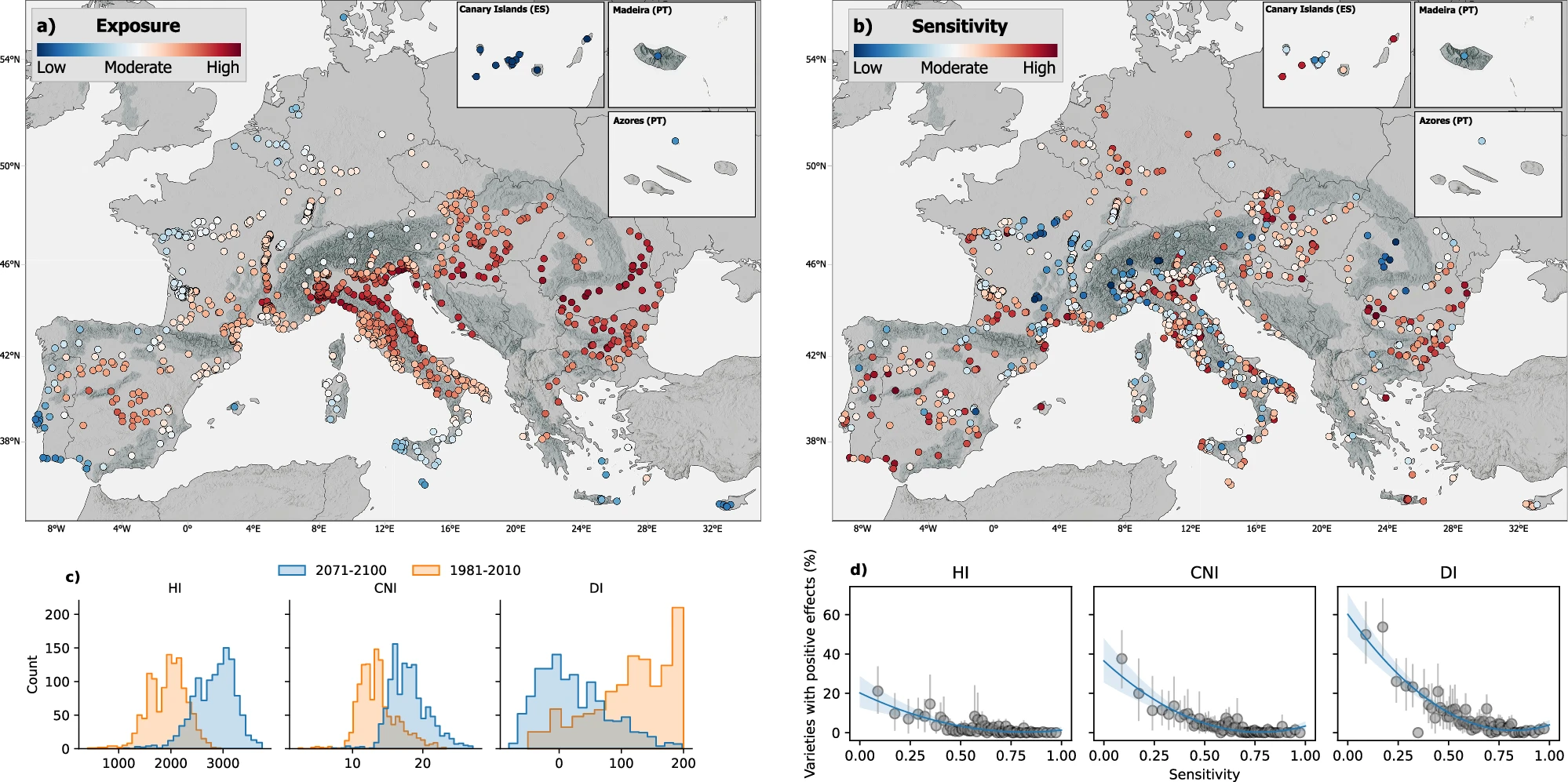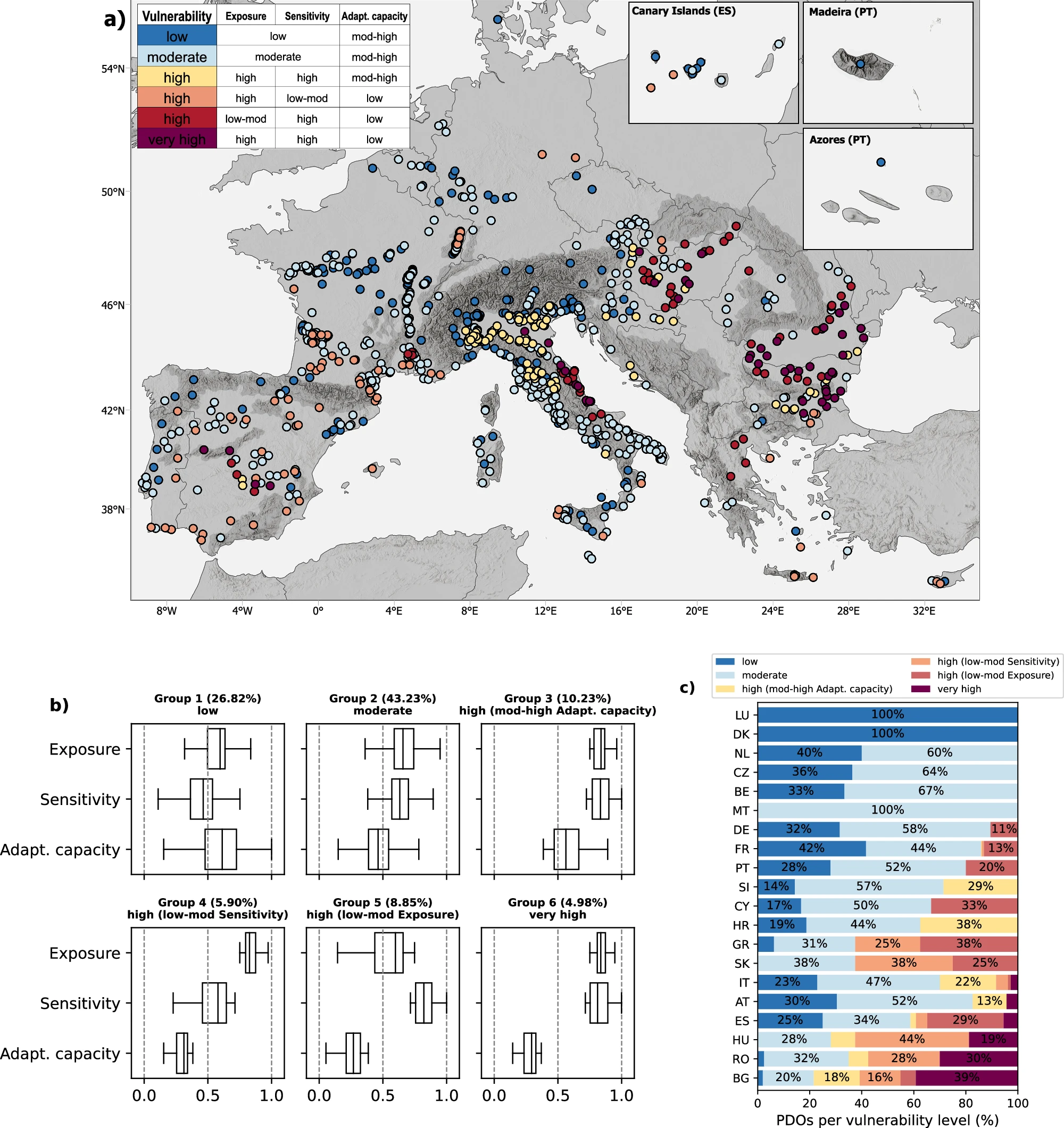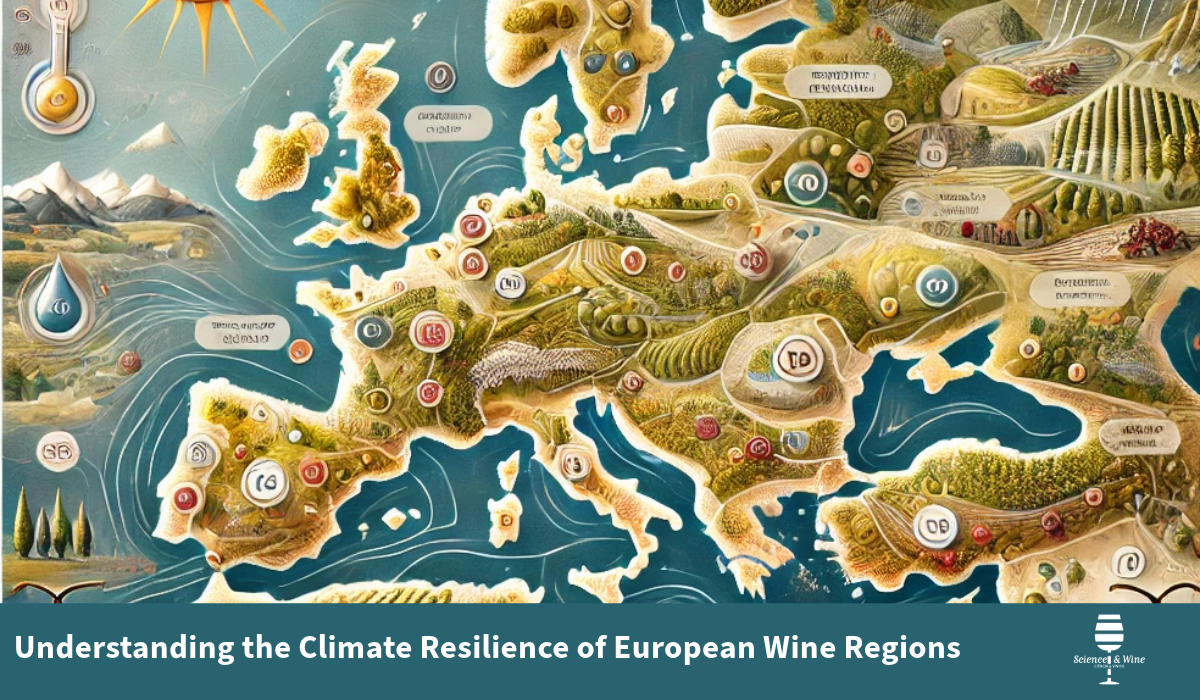Introduction
The wine industry is deeply intertwined with the climate, geography, and traditions of the regions where it thrives. This unique relationship, often encapsulated in the concept of “terroir,” defines the identity of wines from different parts of Europe. However, with the growing impacts of climate change, this historic union is under threat. A recent study titled “Climate Resilience of European Wine Regions,” published in Nature Communications by Simon Tscholl, Sebastian Candiago, Thomas Marsoner, Helder Fraga, Carlo Giupponi, and Lukas Egarter Vigl, delves into this pressing issue, providing a comprehensive assessment of how climate change is affecting wine-producing regions across Europe and proposing pathways for increasing their resilience.
This blog post will explore the key findings of this study, discuss its implications for the future of European viticulture, and reflect on how these insights can guide the wine industry toward a more sustainable and resilient future.
The Importance of Geographical Indications (GIs) in Wine Production
One of the foundational aspects of European viticulture is the system of Geographical Indications (GIs), which links a wine’s identity to its region of origin. Wines classified under Protected Designations of Origin (PDOs) must be produced, processed, and prepared within specific geographical areas, adhering to strict regulations that include grape varieties, cultivation practices, and production methods.
The study emphasizes the significance of these GIs, noting that many of the world’s most famous wines are known more for their place of origin than for the grape varieties used. This system, while ensuring the preservation of traditional wine-making practices, also presents challenges in the context of climate change. The rigidity of GIs can limit the ability of wine regions to adapt to changing climatic conditions, thereby increasing their vulnerability.

Fig. 1: Exposure and sensitivity to climate change of European wine GIs. a, b Map of climate change exposure and sensitivity of the European wine GIs. The regions are indicated by their geographical center. Dark gray areas in the background represent mountain regions. Made with Natural Earth. Free vector and raster map data @ naturalearthdata.com. c Histogram showing the distribution of HI, CNI and DI for the periods 1981–2010 and 1971–2100 under the ssp370 scenario of all wine regions. d The sensitivity of European wine GIs related to the share of varieties with potential positive effects from climate change (see methods) for each PDO under the ssp370 scenario and for the period 2041–2070 considering three bioclimatic indices. The blue line shows a polynomial model between the two variables. Points for each x-value have been aggregated using the mean function to reduce the number of points in the plot. Each point represents n = 18 regions (total number of regions = 1085). Gray bars around each point indicate the 95% confidence interval. HI Huglin Index, CNI Cool Night Index, DI Dryness Index, ES Spain, PT Portugal.
Assessing Vulnerability to Climate Change
The authors conducted a climate change vulnerability assessment of 1,085 wine GIs across Europe, using a combination of biophysical and socioeconomic indicators. Their approach was guided by the Intergovernmental Panel on Climate Change (IPCC) framework, which considers three main components of vulnerability: exposure, sensitivity, and adaptive capacity.
- Exposure: This measures the degree to which a region is projected to experience changes in climate. The study found that wine regions in Southern and Eastern Europe, particularly those in mountainous areas like the Apennines, Alps, and Carpathians, are among the most exposed to climate change. These regions are expected to face significant increases in temperature and decreases in precipitation, which could severely impact grape growing conditions.
- Sensitivity: Sensitivity refers to how susceptible a region is to the effects of climate change, based on the historical climate ranges of the grape varieties it cultivates. The study identified regions with high sensitivity in Southern Europe, where grape varieties are already near the upper limits of their climatic tolerance. Conversely, some regions in higher latitudes, like Champagne in France, showed lower sensitivity due to their cooler climates, which are still within the optimal range for their traditional grape varieties.
- Adaptive Capacity: This is the ability of a region to adapt to changing climatic conditions. It encompasses financial resources, infrastructure, human capital, and social factors. The study found significant variability in adaptive capacity across Europe, with regions in Italy and Slovenia demonstrating high adaptive capacity due to their economic resources and infrastructure. In contrast, regions in Central Spain and Eastern Europe showed lower adaptive capacity, making them more vulnerable to the impacts of climate change.

Fig. 2: Adaptive capacity of the European wine GIs. a Map showing the adaptive capacity of European wine GIs. The points refer to the centroids of the regions. Dark gray areas refer to mountain regions. Made with Natural Earth. Free vector and raster map data @ naturalearthdata.com. b Petal diagram showing the five dimensions (colors) of adaptive capacity and the related indicators for six selected GIs. IT Italy, FR France, DE Germany, PT Portugal, ES Spain.
The Integrated Vulnerability Index
By combining these three components, the authors developed an integrated vulnerability index, which provides a holistic view of the susceptibility of European wine regions to climate change. The index revealed that approximately 5% of European wine regions fall into the category of “very high vulnerability.” These regions, located primarily in Bulgaria, Romania, Hungary, Italy, and Spain, face severe challenges due to high exposure, high sensitivity, and low adaptive capacity.
Regions with high vulnerability are likely to experience significant disruptions in their wine production, potentially leading to changes in the types of grapes that can be grown and the quality of wines produced. In some cases, traditional wine characteristics might be lost entirely, requiring substantial adaptations or even a rethinking of the GI system itself.
Climate-Resilient Development Pathways
Given the vulnerabilities identified, the study suggests several pathways for enhancing the resilience of European wine regions:
- Adaptation of Viticultural Practices: Regions with high exposure levels may need to adopt new viticultural practices to cope with changing conditions. This could include canopy management, irrigation, and the use of cover crops to modify microclimatic conditions within vineyards. These practices can help mitigate some of the negative impacts of climate change on grape growing.
- Flexibility in GI Regulations: To maintain the identity and quality of wines, the study advocates for greater flexibility in GI regulations. This could involve allowing the introduction of new grape varieties better suited to future climatic conditions or modifying production practices to adapt to the new environmental realities.
- Promotion of Grape Variety Diversity: Increasing the diversity of grape varieties within wine regions can buffer against the impacts of climate change. By cultivating a wider range of varieties, regions can reduce their sensitivity to specific climate-related stressors and maintain their production even as conditions change.
- Investment in Adaptive Capacity: Strengthening the adaptive capacity of wine regions is crucial for their long-term resilience. This could involve investing in infrastructure, enhancing access to financial resources, and improving education and training for vineyard managers and workers. Regions with higher adaptive capacity are better positioned to implement necessary adaptations and sustain their wine production in the face of climate change.
- Rethinking the Concept of Terroir: The study also calls for a re-evaluation of the traditional concept of terroir. While terroir emphasizes the unique combination of natural and human factors that define a wine’s character, the rigid adherence to historical practices may no longer be sustainable in a changing climate. By allowing for innovation and adaptation within the framework of terroir, wine regions can preserve their identity while also becoming more resilient to climate change.

Fig. 3: Integrated vulnerability index of European GI regions to climate change. a The integrated vulnerability index of the wine GIs in Europe. The regions are represented based on their centroids. Dark gray areas refer to mountain regions. Made with Natural Earth. Free vector and raster map data @ naturalearthdata.com. b Groups of regions based on the integrated vulnerability index. Each boxplot shows the distribution of exposure, sensitivity and adaptive capacity among the wine regions included in the same group. Total sample size across all groups includes all investigated PDO regions (n = 1085). Boxplots show the three-quartile values of the distribution (the line indicates the median and the bounds of the boxes the upper and lower quartiles). The whiskers extend to points that lie within 1.5× interquartile range of the lower and upper quartile. c Percentage of wine regions per country based on their integrated vulnerability index. Labels on the bars are only displayed for bars greater than 10%. LU Luxembourg, DK Denmark, NL Netherlands, CZ Czechia, BE Belgium, MT Malta, DE Germany, FR France, PT Portugal, Sl Slovenia, CY Cyprus, HR Croatia, GR Greece, SK Slovakia, IT Italy, AT Austria, ES Spain, HU Hungary, RO Romania, BG Bulgaria.
Implications for the Future of European Wine
The findings of this study have profound implications for the future of European wine. As climate change continues to alter the environmental conditions under which grapes are grown, wine regions must adapt or risk losing the characteristics that have made their wines famous. This will require not only changes in viticultural practices but also a shift in how wine regions are managed and regulated.
For wine producers, the study highlights the importance of proactive adaptation. Waiting for climate change to force changes in production practices could result in significant economic losses and a decline in the quality of wines. Instead, producers should begin exploring new grape varieties, investing in climate-resilient infrastructure, and advocating for more flexible GI regulations.
Policymakers also have a crucial role to play in supporting the wine industry’s adaptation efforts. This could involve revising GI regulations to allow for greater flexibility, providing financial incentives for investments in climate resilience, and supporting research into new grape varieties and viticultural practices.
Conclusion
The paper “Climate Resilience of European Wine Regions” by Tscholl et al. offers valuable insights into the challenges and opportunities facing European viticulture in the context of climate change. By assessing the vulnerability of wine regions and proposing strategies for enhancing resilience, the authors provide a roadmap for ensuring that Europe’s rich tradition of winemaking can continue to thrive in the face of an uncertain future.
As climate change reshapes the landscapes and climates that have long defined European wines, the industry’s ability to adapt will determine whether it can maintain its global reputation for quality and authenticity. The time to act is now, and the choices made today will have lasting impacts on the wines of tomorrow.
References
- Tscholl, S., Candiago, S., Marsoner, T., Fraga, H., Giupponi, C., & Egarter Vigl, L. (2024). Climate resilience of European wine regions. Nature Communications. https://doi.org/10.1038/s41467-024-50549-w

